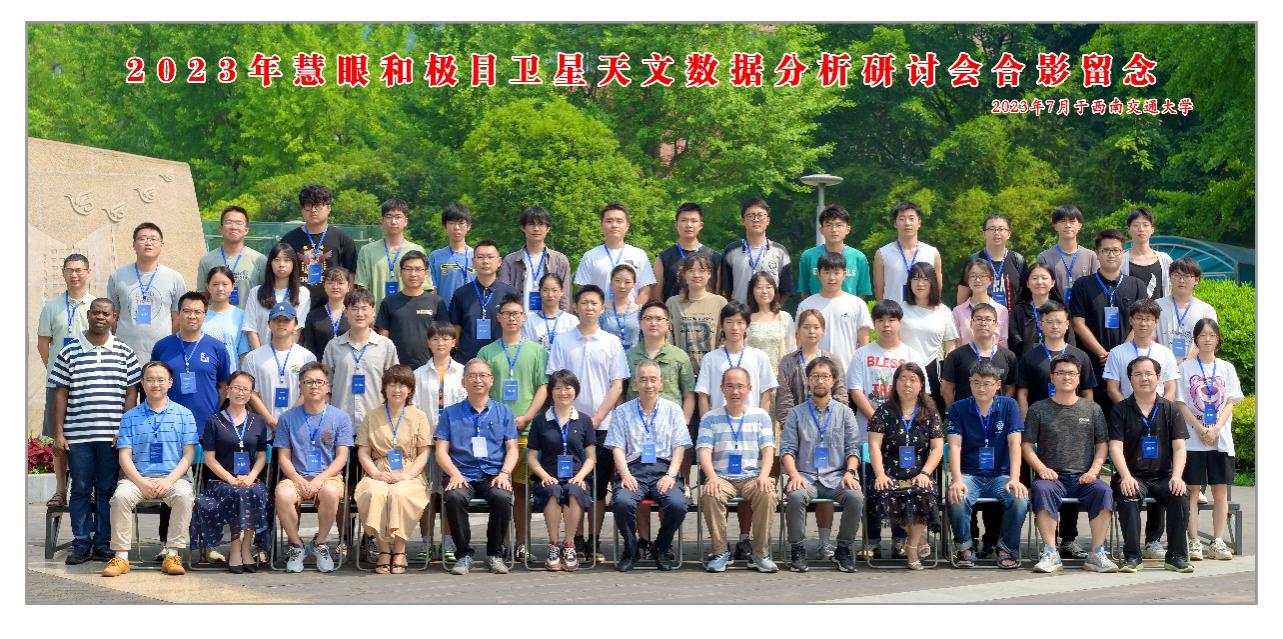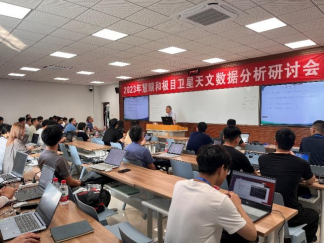To promote the development of space astronomy in Sichuan, the 2023 Meeting on Analysis of Satellite Astronomical Data for Huixian and Jimo Satellites was held at Southwest Jiaotong University from July 7th to July 10th, 2023. This conference was organized by the Sichuan Astronomical Society and hosted by the School of Physical Science and Technology's Center for Astrophysics at Southwest Jiaotong University. It was conducted in a hybrid format, combining both online and offline participation. Over 100 participants from various institutions, including the Institute of High Energy Physics, Chinese Academy of Sciences, Southwest Jiaotong University, Sichuan Normal University, Purple Mountain Observatory, Guizhou University, West China Normal University, South China University, and more, took part in the conference, with nearly 60 attending in person. The conference was chaired by Associate Professor Zhu Fengrong.

The opening remarks were delivered by key figures involved in the operation of the Huixian satellite, including Associate Researcher Li Xiaobo from the Institute of High Energy Physics, Chinese Academy of Sciences, and Professor Jia Huanyu, Executive Dean of the School of Physical Science and Technology at Southwest Jiaotong University. Dr. Ren Anbing, Deputy Secretary-General of the Sichuan Astronomical Society, and Researcher Liu Yu, Director of the Center for Astrophysics at Southwest Jiaotong University, also delivered speeches. Professor Jia Huanyu extended the warmest welcome to the experts and scholars attending the conference, expressed sincere gratitude for the support provided by the Institute of High Energy Physics, Chinese Academy of Sciences, and provided an overview of the recent developments in the School of Physical Science and Technology. Researcher Liu Yu emphasized the importance of the conference in the context of the March 2023 announcement by the Ministry of Education and four other departments regarding the adjustment, optimization, and reform of the disciplines and specialties of higher education, which called for the moderate expansion of disciplines in demand, including astronomy. Against this backdrop, the conference on satellite data analysis holds significant relevance for the development of the astrophysics discipline at Southwest Jiaotong University.

The conference was divided into two stages. The first stage consisted of presentations. Li Xiaobo provided an overview of the overall situation of the Huixian satellite's six years of in-orbit operation, including aspects such as proposal solicitation, observation design and development, payload performance research, and highlights of scientific achievements. Huang Yue introduced the basic information and in-orbit operation of the Jimo satellite, Jia Shumei discussed the Einstein Probe (EP) satellite project, the performance of the subsequent X-ray telescope payload, and the work of its scientific data center. Ge Mingyu mainly talked about the periodical changes, state transitions, and the impact on the surrounding interstellar clouds in young pulsars. Zhao Haisheng focused on the observation capabilities and research examples of the Jimo and Huixian satellites in studying solar flares. Shi Haoli provided an overview of the Sino-French cooperation on the SVOM satellite and reported on the latest progress and future plans of the GRM instrument center. The second stage involved practical data analysis, with on-site guidance from students and staff from the Institute of High Energy Physics, Chinese Academy of Sciences.

It is worth noting that the Huixian and Jimo satellites are independently developed X-ray and gamma-ray space telescopes in China. Their primary mission is to observe and study high-energy radiation phenomena from compact celestial objects such as black holes and neutron stars. Additionally, they can monitor high-energy radiation phenomena in space environments, including solar flares and Earth's gamma-ray flashes. This conference focused on the scientific and technical aspects of these two satellites, satellite data processing methods, and guided teaching practices in satellite data processing. It aimed to provide guidance and assistance for young scholars and students to better understand and use relevant satellite data, ultimately promoting discipline development and talent cultivation in the field.





